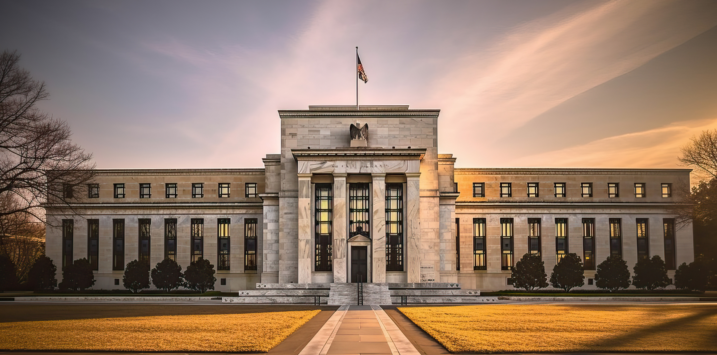
What the Fed actually said this time: Jerome Powell’s own words on rates, inflation, and the economy
One of the biggest challenges for investors and market watchers – especially those with a shorter-term bias – is deciphering Federal Reserve (Fed) policy. Typically, they rely on headlines, media soundbites, and second-hand analyses. But every so often, it pays to look directly at what the Fed is actually saying. Below is a recap of Federal Reserve Chair Jerome Powell’s most recent press conference – highlighting key quotes from Powell himself – so you can form your own views on where monetary policy and the economy might be headed.
Powell’s prepared remarks:
On the mandate and the economy
“The Federal Reserve remains squarely focused on our dual mandate of maximum employment and stable prices,” Powell said. By his assessment, the U.S. economy is “strong overall,” and has made significant progress over the past two years despite a gradual “cooling” in the labour market. Even so, he described employment conditions as “solid,” highlighting the stable 4.1 per cent unemployment rate and wage growth that no longer appears to fuel inflation.
On inflation and policy decisions
“We remain committed to sustained two per cent inflation,” Powell stated, noting that both total and core personal consumption expenditures (PCE) remain above the two per cent target but are considerably lower than their peaks. “Total PCE prices rose 2.6 per cent year-over-year, and core PCE rose 2.8 per cent,” he noted. He characterised longer-term inflation expectations as “well-anchored.”
The Fed opted to keep its policy interest rate unchanged in this meeting, following a series of earlier rate cuts totalling 100 basis points. “After cutting by 100 basis points … we don’t have to cut again right now,” Powell explained. “Reducing the policy rate too fast could undo our progress on inflation.”
On future rate moves
While not ruling out additional cuts or rate hikes, Powell made it clear the Fed is “not on any pre-set course.” He stressed that officials would remain attentive to incoming data when deciding whether to adjust policy. “We’re in no rush,” he said. “We’ll cut again, or raise rates, depending on what’s needed.”
On other economic indicators
Beyond interest rates, Powell pointed to a few notable trends:
Housing:
“After weakness earlier in the year, housing sector activity is stabilising.”
Business Investment: “Investment in equipment and intangible [assets] was strong for 2024, though it slowed in Q4.”
Growth:
“Economic activity is expanding at a solid pace, with sustained year-over-year growth of over 2 per cent.”
Powell also provided a reminder about the Fed’s ongoing balance sheet reduction efforts: quantitative tightening (QT). “We decided to continue QT,” he said, emphasising that officials see sufficient reserves in the financial system.
This last point is vital for investors to understand as it pertains to liquidity, which ultimately fuels market booms. Many reputable investors believe the Fed needs to grow its balance sheet quickly. QT does the opposite – it shrinks balance sheets!
Highlights from the subsequent Q&A
The media’s questions ranged from the Fed’s independence in the face of political pressure to the impacts of tariffs and immigration on the labour market. Here’s what Powell said – directly.
On rate cuts and policy stance
Nick Timiraos of The Wall Street Journal pressed Powell on whether the Fed’s policy rate was too restrictive. “We feel pretty good,” Powell replied, pointing to the 100 basis points of cuts already made. “Right now, the policy feels like it’s in the right place: bringing inflation down while keeping unemployment low.”
On asset prices and crypto
CNN raised concerns about bubble-like conditions, particularly in AI-driven stock valuations, to which Powell replied, “Asset prices are elevated by many metrics…but households, businesses, and markets are resilient, so we’re not that worried.”
He also addressed crypto risk: “We’re not against innovation,” he said, but recommended that “folks transact crypto through regulated banks” and suggested more regulation may be prudent.
On inflation targets and expectations
When The New York Times asked about the removal of certain language from the statement on inflation progress, Powell shrugged it off: “Don’t take too much from that. We’re just cleaning up the language,” reiterating the Fed’s “full commitment to hitting our 2 per cent target.”
Powell also noted short-term inflation expectations had risen after some of President Trump’s policy announcements, but cautioned the Fed is waiting for more data before it draws any firm conclusions.
On the labour market
Powell observed that while the hiring rate is down, “the labour market remains ‘solid’ – unemployment is low and stable.” He admitted it can be “harder to find a new job” right now but emphasised that the Fed does not need further labour-market cooling.
On housing and mortgage rates
The Economist pointed out that mortgage rates have actually risen in tandem with rate cuts. Powell attributed this to “term premium” shifts, acknowledging that “if higher mortgage rates persist, it will dampen housing activity.”
On trade tariffs
When the Financial Times asked about the potential return of tariffs similar to Trump’s first term, Powell took a wait-and-see approach: “Things are different … the footprint of trade has changed a lot. We don’t want to speculate at this time.”